
Our call to the next Government of Aotearoa New Zealand



Our call to the next Government of Aotearoa New Zealand

The Motor Trade Association is the voice of the automotive industry in New Zealand.
We represent more than 3800 businesses that fix, fuel, buy, sell, and inspect the country’s vehicle fleet – helping families and communities travel and connect safely.
Our members work in general and specialist automotive repair, service stations, parts and accessories, new and used vehicle dealers, collision repair and vehicle recovery.
We are at the heart of every community, and the strength of our industry is fundamental to the strength of our country.
Road travel is in New Zealanders’ DNA. The right to affordable, accessible driving is an important part of our standard of living and must be preserved.
MTA has the expertise, experience and people to work with future governments to develop and meet road safety, environmental and social targets.
This is our call to the next Government of Aotearoa New Zealand. Our call to all parties to listen to the issues that the automotive industry is facing. Issues that affect every single New Zealander, now and in the future.
This is our call for action.
$5.5bn THE AUTOMOTIVE SECTOR CONTRIBUTES TO GDP
4.5 MILLION
LIGHT PASSENGER VEHICLES ON THE ROAD
15 YEARS AVERAGE AGE OF VEHICLES IN NZ FLEET
46 RAM RAIDS ON FUEL STATIONS IN 2022 3300 PEOPLE DIE PREMATURELY FROM AIR POLLUTION A YEAR
40%
16,223 NEW EVS IN 2022 10% FATAL CRASHES HAVE VEHICLE FACTOR (2015-19)
VEHICLES FAIL WOF INSPECTION, REQUIRE RETEST
Motor Trade Association members provide New Zealanders with the mobility which our community relies on to work, play and enjoy freedom of choice around movement.
MTA uniquely bridges vehicle and parts supply, maintenance, repair, fueling and compliance suppliers, with consumers who rely on the Bright Blue Badge. A huge 85% of licence-aged individuals recognise the MTA brand, and report it stands for reputable, high-standard, guaranteed supply and service.
Around 4000 individual goods and service locations across the country meet the standards strictly required to display the Badge, in an industry that adds $5.5 billion to Gross Domestic Product, passing across the counter some $30 billion of goods and services.
MTA focuses not only on assisting our members to be the best, most efficient, and most sustainable operators in the sector, but importantly advocating for regulatory and licensing policies that optimise the consumer benefits and participant efficiency in this vital part of our economy and our society.
Our policy perspective and priority for the automotive sector are very simple: Safe cars, safe air, safe roads.
The policy landscape is complex in the face of technological advances, climate change and health perspectives.
This manifesto brings together MTA’s insights into the efficacy of key current policy settings and the efficiency impacts on our industry, and promotes some alternate priorities for the next Government which we stand ready to work together on.
The resulting recommended policy imperatives will provide more “bang for buck” for New Zealand society, and less efficiency-sapping frustration and distortion for suppliers.
Safe cars, safe air, safe roads in the immediate future and beyond.
Bob Boniface MTA President
We believe the automotive industry is on a journey. The journey has four roads. These are the roads the next Government must help the automotive industry navigate if all New Zealanders are to travel safely now and in the future.
The automotive industry is not about cars, motorbikes, and trucks. It is about people. Not just the tens of thousands of people who work in our industry – but every single New Zealander.
Our national fleet is unique. While we are embracing new environmental technologies, many of our vehicles are aging. Our fleet must be carefully managed to protect families and communities.
We support and encourage the greater use of low-carbon vehicles and new technologies to preserve Aotearoa for future generations, in a way that is efficient, considered and fair.
The road must be smooth and even for all participants. Just as those who travel our country must have protections and safeguards, so too must our industry.
People are the lifeblood of our industry. But many employers cannot find enough people to keep their business running at peak performance, if at all. This threatens their livelihoods, affects their financial and mental health, and impacts on communities who rely on automotive businesses to travel safely. It hinders our ability to support governments to meet environmental goals.
At the same time, those who work in our industry must be kept safe from crime, and offenders must face the appropriate consequences of their actions.
The shortage of skilled labour is the number one concern for the industry. The demands on automotive businesses are high. Some are closing under financial and emotional stress. They need strong support.
As of April 2023, there are more than 2000 job vacancies in the automotive sector.
The automotive industry wants to hire New Zealanders for these roles. But at the moment, there simply aren’t enough skilled local workers to fill the vacancies. Increasingly, the automotive industry faces competition for our talented young people from offshore and employers from outside the automotive industry.
Immigration can be a very effective short-term fix to bridge the labour shortage gap while local talent is nurtured. But only limited roles are on the immigration Green List. Other crucial roles, which help keep our fleet safe and efficient, are absent.
Even if businesses can secure a migrant worker, they often have to wait months
for the paperwork to be processed. In some cases, job checks expire before the process is complete – necessitating the application process to be started again.
The resources do not currently exist to provide adequate guidance and oversight of regulation requirements, which need to include qualification and experience assessments. MTA could set up occupation registration for automotive technicians that involve a qualification and experience assessment.
For example, an automotive technician who holds a relevant trade certificate and has at least three years’ experience would be considered skilled and verified by MTA and could then qualify for points under the professional registration.
To protect the immigrant worker, we would strictly ensure MTA’s system is equitable and fair, and migrants aren’t forced to work at a level that is not commensurate with their skills and what they should be paid, just to get the paperwork they need for residence.
• Expand the immigration Green List to include collision repair and refinishing trades immediately
• Equip immigration officials with the resources and processes to effectively process applications. Ensure visas are processed efficiently to ensure workers are in New Zealand at the right time
• Work with MTA to establish MTA as a qualification and skills assessor, allowing MTA to offer a certification process that verifies if a migrant worker possesses the necessary experience and qualifications
• Remove the 1.5x wage threshold and focus on immigration settings that smooth the pathway for foreign workers to come here when roles can’t be filled domestically
• Level 4 qualifications need to be recognised as a skilled qualification
WE NEED COLLISION REPAIRERS ADDED TO THE GREEN LIST, 100%. WITHOUT THAT, WE’RE IN STRIFE. ”
“The last year has been the most stressful in the last ten years. I’ve been a staff member short and I’m working 16 hours a day myself.
Inflation is hurting us. Our employees need more money to live, and we are constrained in the rates we can pay. We are price takers, not price makers, because of the market power leveraged by big insurance companies.
Inflation has meant an extreme rise in our costs. It’s got to be brought under control.
We have a good team here, but recently I’ve noticed that some are becoming disheartened, people are starting to look around, and we’re paying maximum wages as it is.
They see the ads on Facebook offering big money for working in the mines in Australia. Locally, people can go and be truck drivers for better money. You can’t blame them, they’ve got families to support.
The industry is at a breaking point. Businesses are closing, older owners are just selling up. We’re heading for a crisis in the next five years.
Only about two out of ten apprentices make it through. The Green List isn’t a long term fix but it’s a short term solution, because it’s a pathway for skilled workers into the country.
The stress is driving people out of the industry. The stress and pain of running a business isn’t worth it for a lot of people.”
Chris greaney City Collision Repairs
Vocational education has been through an ambitious reform programme with multiple organisations involved. This programme is not complete, and there is uncertainty about Te Pūkenga’s structure and stability.
The role of Hanga-Aro-Rau Workforce Development Councils (WDC) is to advocate on the automotive sector’s behalf and lead the development of industry qualifications and standards. Hanga-Aro-Rau works with multiple organisations, including the Regional Skills Leadership Groups (RSLGs), the New Zealand Qualifications Authority, the Centres of Vocational Excellence; and finally, key providers such as
Te Pūkenga, Wānanga, Private Training Establishments (PTEs), and the Tertiary Education Commission (TEC), which funds WDCs and signs off on their operational plans.
Industry throughout these reforms was promised a strong voice in vocational education training. We are concerned that through the reforms, we no longer have a strong place in the decision-making of the educational requirements and industry standards. Prior to the reforms, we were intimately involved in all aspects of the system that shaped our industry qualifications, from strategy and governance to technical expert advice. Business owners are best placed to help shape vocational education requirements and standards.
• Guarantee that apprenticeships will remain a key part of the vocational education system with employers at the centre
• Guarantee that the automotive sector voice, including MTA, is fairly included and represented at all levels of vocational education
• Ensure the outputs of vocational education are strongly connected, responsive and accountable to industry skill needs
• Ensure that all courses and training are fit for purpose and meet the needs of the modern industry
• Prioritise and invest in supporting secondary schools to showcase vocational education as a premium pathway, empowering students to pursue diverse career paths
Electric vehicles (EVs) are essential for not only the future of the industry, but the future of all New Zealanders. For 100 years, the automotive industry has been firmly established in internal combustion engine technology. But now it is pivoting at great pace to embrace electric vehicles and encourage their increased uptake and use.
However electric vehicles are very different to traditional fossil fuelpowered vehicles. The modernising of our fleet means the learning of new technologies, the teaching of new skills, and extra resources for training staff.
With the focus on the transition to EVs, little has been said about the standardisation of repairs, safety, and training standards for the different types on the market. There is nothing stopping a technician from working on an EV if they don’t have the requisite qualifications. In the interests of health and safety, all technicians working on EVs should be licensed and properly trained.
A leading EV manufacturer has indicated a willingness to work with MTA in this area. They want to train apprentices but currently can’t do so — it requires ICE content, which they can’t provide. They have created a programme curriculum to train EV technicians in Australia, but have been told that it would take two to three years to do so here. This means they are forced to hire technicians from other companies, as they can’t train their own.
The industry needs comprehensive apprentice training tailored specifically to repairing and servicing EVs. With the number of EVs on our roads growing each year, we need to ensure New Zealand has the skills base to service and maintain the future fleet.
1 ‘Electric vehicles’ include Battery Electric Vehicles (BEVs), which are fully electric; Plug-in Hybrid Electric Vehicles (PHEVs), which run on petrol or diesel but are supported by an electric battery that is plugged in and charged through an external source; and Hybrid Electric Vehicles (HEVs). Hybrid Electric Vehicles are powered by an internal combustion engine (ICE) and supported by an electric battery. These HEVs don’t plug into an external electricity source, so they charge their batteries through regenerative braking.
• Direct agencies to set up specific EV apprenticeship pathways as soon as possible, enabling more workers to gain skills for an expanding EV market
• As part of supporting a just transition, establish a fees-free EV programme to foster the automotive industry’s future development and enhance the EV sector. Also provide fees-free EV micro-credentials to ensure all in the sector have access to EV safety and handling training
For a healthy automotive industry, and therefore a healthy country, it is essential to attract, support and encourage New Zealanders to succeed. There are exciting roles for people of all walks of life within the automotive industry — our businesses strongly support greater diversity in the workplace.
The school students of today will keep future generations moving safely. But currently, not enough are joining our industry – this will only change if future governments support learners and employers alike.
MTA believes the Apprenticeship Boost initiative has provided excellent “bang for buck” in the training area.
According to MITO, between 2019 and 2021 new automotive apprentices grew from 1425 to 1862 (an increase of 31%).
With higher input costs across the board, the time involved training apprentices can put a lot of pressure on small businesses.
Apprentice Boost shares the risk for the employer until the apprentice is a productive asset for the business.
We believe the Apprenticeship Boost initiative needs to become permanent. It works. As of February 2023, 50,000 young people have benefited from the programme.
• Support automotive businesses taking on young people by making the Apprenticeship Boost scheme permanent
• Consider a tiered structure of payments under Apprenticeship Boost to ensure skilled trainers are recognised and rewarded for their contribution to developing apprentices

IF APPRENTICESHIP BOOST WAS CANNED, IT WOULD MAKE IT MUCH HARDER FOR US TO TAKE ON APPRENTICES. IT SUPPORTS BUSINESSES THAT TAKE ON YOUNG KIWIS.
”
“We currently have four apprentices under the Apprenticeship Boost scheme. It was definitely a catalyst for taking them on.
I went through an apprenticeship myself, so I know their value. We usually take on an electrical apprentice and a mechanical apprentice every year.
Apprenticeship Boost definitely helps. It takes away some of the hesitation around cost. Especially in a tough year like we’ve just had – it could be the difference between taking on an apprentice and not.
It’s really, really important to our industry to keep training our own young people. We need to train many more.
Training will be modernised through the education reforms and it’s really important it matches the modern workforce and new technologies. View employers as a classroom.
I would much prefer to take on a young New Zealander who’s willing to learn and motivated, than hire a worker from overseas.
See the value, look at the numbers – keep it going.”
JASON LAND Managing Director, Collins Automotive
The people who work in our fuel stations, workshops and collision repair businesses provide an essential service. Literally, they keep New Zealanders moving. They must be kept safe. But many have been victims of ram raids, robberies and drive-off theft. Currently, many fear for their safety, business security and in some cases their lives.
According to NZ Police, there were 46 ram raids on fuel stations in 2022. In the same period, there was a total of 516 ram raids on all businesses – many of the offenders were under the age of 18.
Service stations are often open late and situated in remote locations. Many already face difficulties in recruiting and retaining staff. The cost of a ram raid to even a fully insured business owner is substantial, as insurance excesses run to thousands of dollars. Further costs are incurred in strengthening and reinforcing buildings to prevent future assaults.
Many business owners say there is a lack of policing and enforcement. Many offenders are young, and business owners say police and courts have little power to punish, rehabilitate or deter them.
While many independent fuel stations can now apply for the fog cannon subsidy, this is only one protection. Drive-off petrol theft also hurts hard-working, independent business owners, without much hope of reimbursement or recourse.

• Work with MTA to widen the range of funding and protective measures available to service stations to keep people safe
• Ensure that police investigate and put increased resources into catching offenders. Give courts the tools to punish offenders appropriately
• Allow capital expenditure for crime protective or preventative measures to be 100% tax deductible in the year in which the cost is incurred
MY DAD STARTED OUR AUTOMOTIVE WORKSHOP BUSINESS 77 YEARS AGO. IN ALL THAT TIME WE ONLY HAD ONE BURGLARY. LAST YEAR WE HAD THREE IN THREE WEEKS, JUST BEFORE CHRISTMAS.
“You work so hard to make a living, and it has a real impact on the business. You put in a new window, and next week it’s smashed again.
It’s cost us thousands of dollars in stock, cash and property damage. Our insurance excess is $1000 on each claim, so that’s cost us $3000 alone.
We’ve had to put in a security system and bars on the windows, which makes our workplace environment less friendly.
Watching it all played back on CCTV makes you feel distressed, violated and unsafe.
There has definitely been an escalation in crime. Everyone knows of someone who has been hit. And we only see the tip of the iceberg.
Offenders think they can get away with it. It’s only a matter of time before there’s a tragedy in our industry, like those that have taken place in dairies.
We don’t want to become like some other countries, with bars on every window. Let’s keep our New Zealand identity.
We need to jump on it early. Address home and family environments. Get kids back into school or some other structured learning environment.
Put the money into intervening early with offenders. Then we can make better citizens out of them. That’s good for everyone.”
SANDRA
PHILLIPS Phillips Garage


All New Zealanders have the right to travel safely on our roads. No family should ever lose a loved one in a vehicle crash. Ensuring the vehicles on our roads are safe, reliable and maintained is an important component in making sure we all get home in one piece. But safety also means reducing harmful emissions that contribute to the deaths of thousands of New Zealanders every year and threaten the health of future generations. Safe cars, safe air, safe roads.
Improving vehicle safety must be prioritised with driver behaviour and road improvements.
MTA broadly supports the ‘Road to Zero’ vision, where no New Zealander is killed or seriously injured on our roads.
There are simply too many unsafe vehicles on our roads.
Forty percent of vehicles now fail their warrant at first inspection – and in some regions, the failure rate is as high as 46%. Seventy percent of these failures are due to non-compliant lights, tyres, brakes, suspension, and steering – all critical safety features.
Data from the Ministry of Transport shows that between 2015 and 2019, around 10% of fatal crashes involved a vehicle factor. That was up from around 5% in the previous few years.
In addition, the requirement that only vehicles registered before 2000 require a six-month warrant is dangerously outdated. Older vehicles lack modern technology that keeps passengers safe,
while deteriorating through age and use. Vehicles that are 22 years old are currently undergoing the essential safety check only once a year. This increases the window and likelihood of unsafe vehicles on our roads. More than 50 percent of the vehicles over 15 years old fail their warrant at the first inspection.
As a matter of priority, the Warrant of Fitness regime must be reviewed and updated. We apply the same test to a vehicle that is five years old as we do to one that is 25 years old. More New Zealanders will die on our roads if the Warrant of Fitness is not changed.
Every community must have enough qualified Warrant of Fitness inspectors to ensure vehicles are being checked thoroughly, and promptly.
Most importantly, there must be enough skilled workers to carry out important safety repairs detected during a Warrant of Fitness inspection. If workshops are shortstaffed, unsafe vehicles are more likely to be on our roads as owners delay or defer important maintenance.

• Change the Warrant of Fitness so that when any vehicle becomes older than 15 years, it is required to undergo a six-monthly test
• Review that safety requirements under the Warrant of Fitness are fit for purpose
• Ensure all cars have a current Warrant of Fitness
• Enable the Ministry of Social Development to financially support low-income families to obtain a Warrant of Fitness
“The current emissions testing rules in the Warrant of Fitness are a joke. The whole Warrant of Fitness regime needs to be looked at.
When it comes to second-hand vehicles, New Zealand has a history of taking other countries’ rubbish. We’ve got cars that are 22 years old on our roads that only need a warrant every 12 months. That makes no sense.
Don’t peg the warrant to a date. Make it a sliding scale. Every vehicle over 15 years old should be made to get a warrant every six months.
It’s only another $70 a year to the consumer. But the price of not doing it is much higher.
The new Government needs to put a greater emphasis on vehicle safety. Reviewing warrants is something they could do in a short space of time. We need to remove some of the ambiguities in the Warrant, there’s too much interpretation in there.
Unsafe tyres are one thing that’s a major issue. You see old cars on bald tyres, bouncing around on dodgy suspension. It’s an accident waiting to happen.”
MATT GREENE
Dunedin City Motors
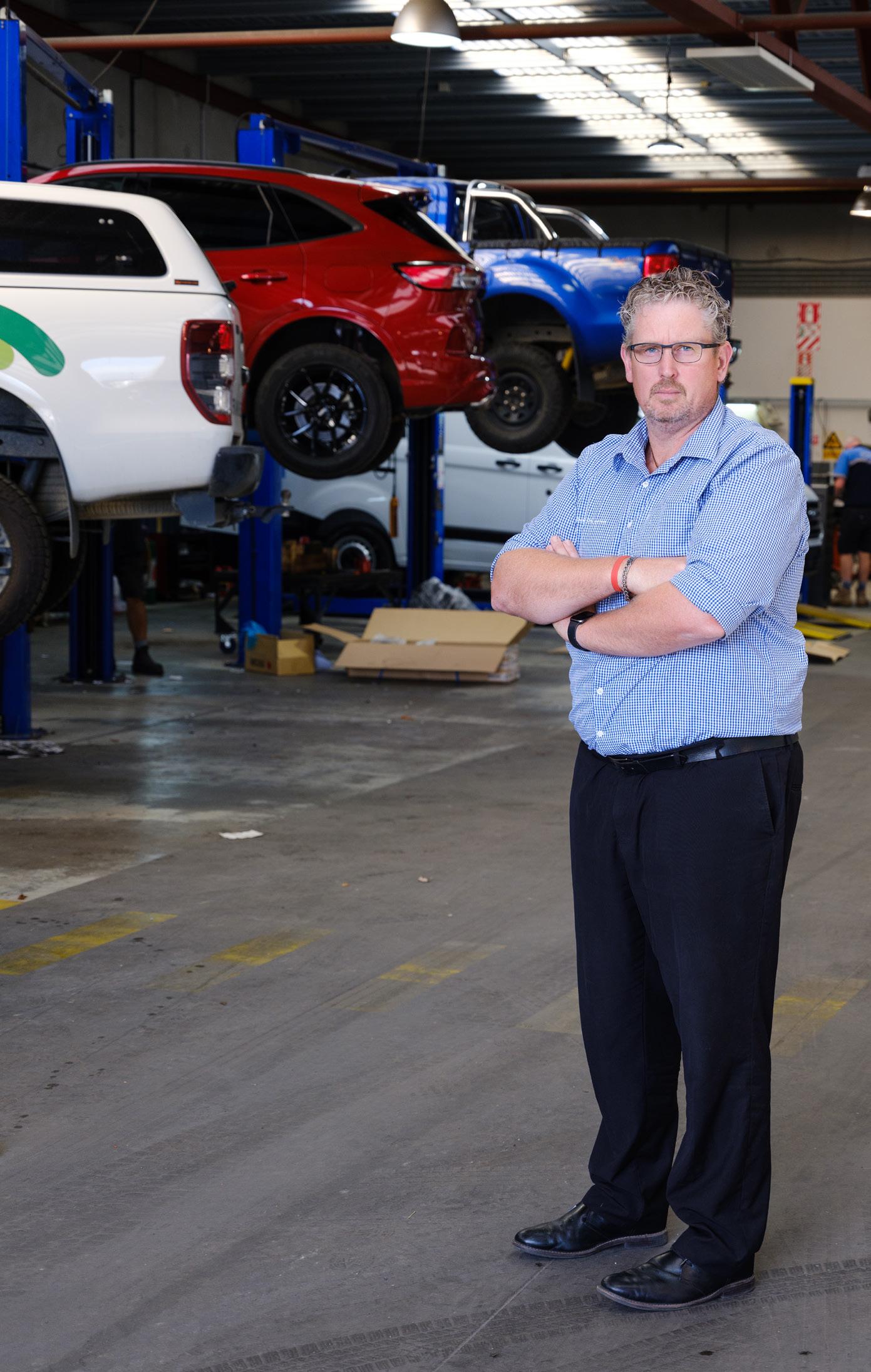
The emissions produced by many inefficient, older vehicles have been linked to the deaths of thousands of New Zealanders.
Last year, the Health and Air Pollution in New Zealand study concluded 3300 people are dying prematurely every year because of air pollution, mostly the nitrogen dioxide produced by cars. In addition, harmful emissions damage the environment and contribute to climate change.
Harmful emissions also hurt New Zealanders financially – poorly serviced vehicles will cost more in fuel to run, and be more likely to need expensive repairs down the track. A well-serviced vehicle will travel further on the same amount of fuel than a poorly serviced one.
An engine warning light commonly indicates a poorly maintained engine that is likely to be causing harmful emissions. This should be addressed in the Warrant of Fitness check.
Zero-emission vehicles on our roads are only part of the solution. With the vast majority of our aging fleet running on fossil fuels, emissions testing is vital for the health of everyone.
New Zealand is an outlier when it comes to emissions testing. Many countries in the OECD conduct rigorous testing – we must follow suit.
Emissions testing and regular servicing, especially of older vehicles, will make a significant difference to reducing emissions that harm communities.
According to American research, regular servicing and maintenance can improve a vehicle’s fuel efficiency by at least 4%. Less fuel used also means fewer harmful emissions.
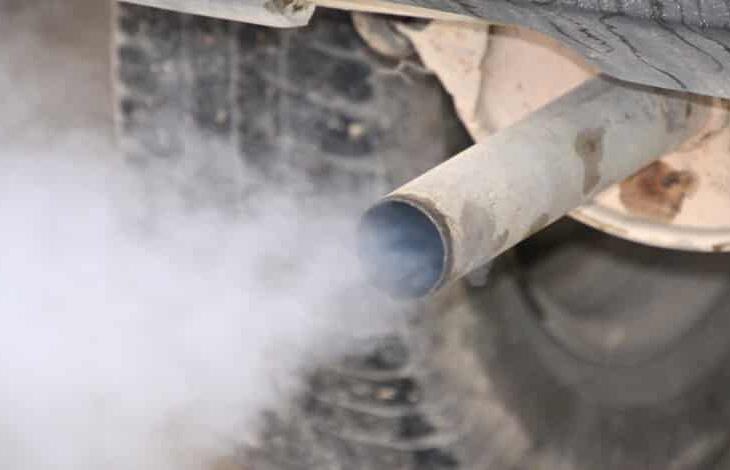
• Automatically fail any vehicle with its engine warning light on at Warrant of Fitness inspection
• As a first option, mandate emissions testing for all vehicles over 10 years old. This will ensure vehicles travel further on their fuel supply, effectively reducing emissions
• Increase awareness and education around emissions testing for vehicles. This will enable policy for emissions reduction to be informed, and all drivers to be better educated about the emissions profile and environmental impacts of their vehicle
“Basically, you’re just meant to rev the engine and look at how much smoke comes out. If you did that, you’ve already polluted the environment.
You don’t even fail your warrant if your engine warning light is on. That should be an automatic fail, same as if the airbag or ABS light is on.
Thousands of people are dying every year from air pollution. Imagine if thousands were dying every year because of airbag or ABS failures – the Government would be all over it!
Preventive maintenance – servicing the vehicle – makes a huge difference, especially to older cars. The number one cause of high emissions is a misfiring engine, pumping raw fuel into the air basically. If you don’t service your car, you get misfires.
The Government needs to lead in this space. Look at the realities of our fleet and the vehicles on our roads.
A campaign to encourage people to get their vehicles tested would be really useful. It’s understandable that people put off getting a service, because money’s tight at the moment.
But if you don’t do preventive maintenance, it’ll cost – cost lives, cost the environment, and cost you money.”
GLENN
THORLEY
Grimmer Motors


The automotive industry is going through its greatest transformation for 100 years. With change comes progress, opportunities and the promise of a better life for all New Zealanders. But change must be managed carefully. It must be effective, it must be controlled, and it must be fair.
The automotive industry supports the goal of decarbonising our sector. We agree that this involves a two-pronged approach of supporting uptake of low and zero-emitting vehicles, and reducing and discouraging high-emitting vehicles.
The current Clean Car Programme employs carrot and stick. We agree with this approach, but the future settings for the “stick” are unrealistic and unworkable.
It is clear there has been strong demand for low-emission vehicles. According to the Energy Efficiency & Conservation Authority (EECA), 2022 saw a 39% increase in electric cars on our roads.
MTA applauds the uptake of vehicles that will protect our environment and health. There is no doubt that the Clean Car Discount (CCD) has contributed to this positive outcome. However, the parameters of the CCD have unfair and unfortunate social impacts.
The current structure of offering a rebate on expensive electric vehicles and a
penalty for higher-emitting vehicles, while well-intentioned, has a ‘reverse Robin Hood effect’ of rewarding consumers wealthy enough to buy an EV, while penalising those who are not.
To meet the current Government’s EV fleet targets, MTA estimates that New Zealand will need to bring in around 54,000 EVs in 2025 to meet the emissions targets for the fleet. In 2021, the number of EVs brought in was just 10,000. That is a 440% increase over four years.
The success of the CCD means New Zealand can follow the example of markets such as the United Kingdom, which has discarded its similar programme.
Furthermore, the projected emissions standards under the Clean Car Standard are unrealistic and unsuitable for the New Zealand market.
They would require New Zealand to meet targets and standards that would place us ahead of European markets.
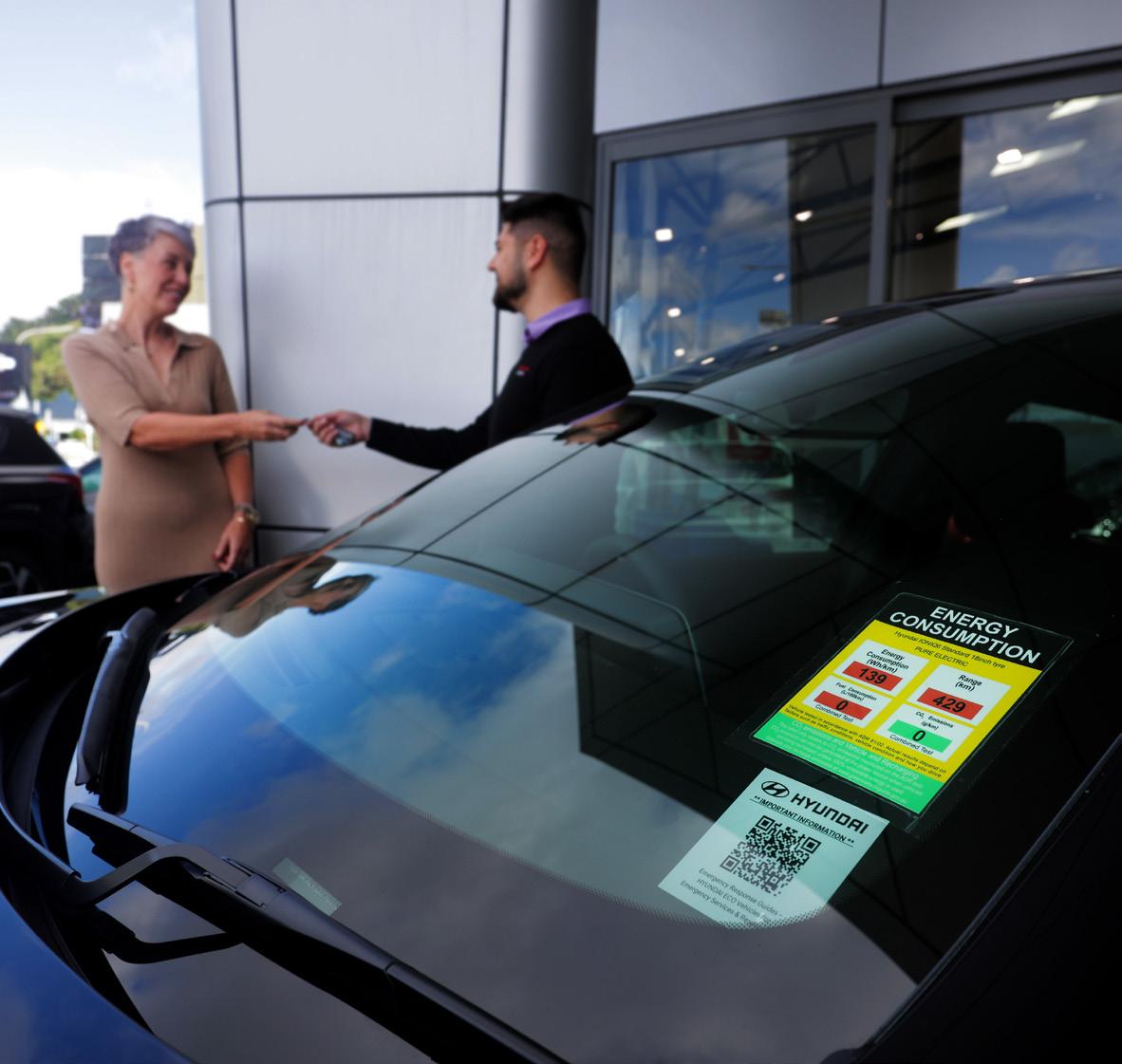
• Phase out the Clean Car Discount
• Keep the Clean Car Standard, but defer the targets and goals by two years
• Consult with MTA and industry to produce more practical emissions settings and targets
• Ensure that tax depreciation rules encourage businesses to take up EVs and other low-emission vehicles
Scrappage and recycling schemes have important roles in transitioning our fleet to a more sustainable future.
Government should work with MTA to create a scrappage scheme to take older, harmful or unsafe vehicles off our roads and assist motorists to purchase cleaner low-emission vehicles.
But the scrappage scheme must be fair and based on scientific rather than social evidence and aspirations.
Recycling must also be given priority. Most automotive businesses want to do the ‘right thing’ in disposing of harmful waste. That includes recycling parts that would otherwise end up in landfills.
While the industry has taken the lead and is willing to continue developing programmes to aid with recycling and product stewardship as part of the circular economy approach, the next government can do much to support.
• Consult with MTA and other industry groups to ensure there are complete recycling programmes in place for all vehicle components, such as tyres, batteries, cooling systems and bumpers, and there are end-of-life strategies to encourage a circular economy
• Create a scrappage scheme that aims to replace older polluting and unsafe vehicles with cleaner and safer modern alternatives
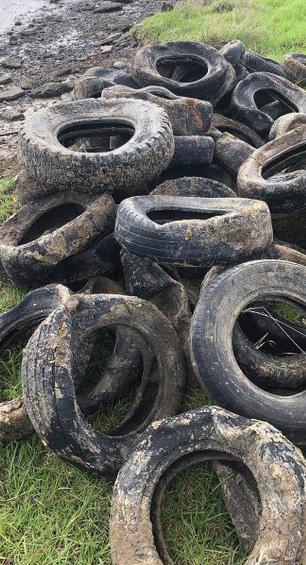
The condition of many of our roads is deteriorating. Many motorists, and those in the transport sector, have suffered damage to vehicles and transport delays as a result of potholes and road faults.
Recent weather events have accelerated the deterioration of many roads and emphasised the need for roads to be robust and built to withstand climate change.
While new climate-friendly transport is to be encouraged, expenditure in other forms of transport must not be at the expense of a strong road network.
Traditionally, road users pay road user charges and fuel taxes to fund roads that they use. In 2020, the law was changed to allow these taxes to pay for rail. While rail has an important role to play in the country’s transport network, we believe that the principle that road users only pay for roading projects should be restored.
• Ensure that the Government Policy Statement on Land Transport directs Waka Kotahi to prioritise investment in road maintenance and repairs
• Restore the founding principle of the National Land Transport Fund to focus solely on roads
• Ensure that all New Zealanders have access to EV charging infrastructure
• Ensure that all vehicles on the road, including EVs, pay their fair share to the National Land Transport Fund
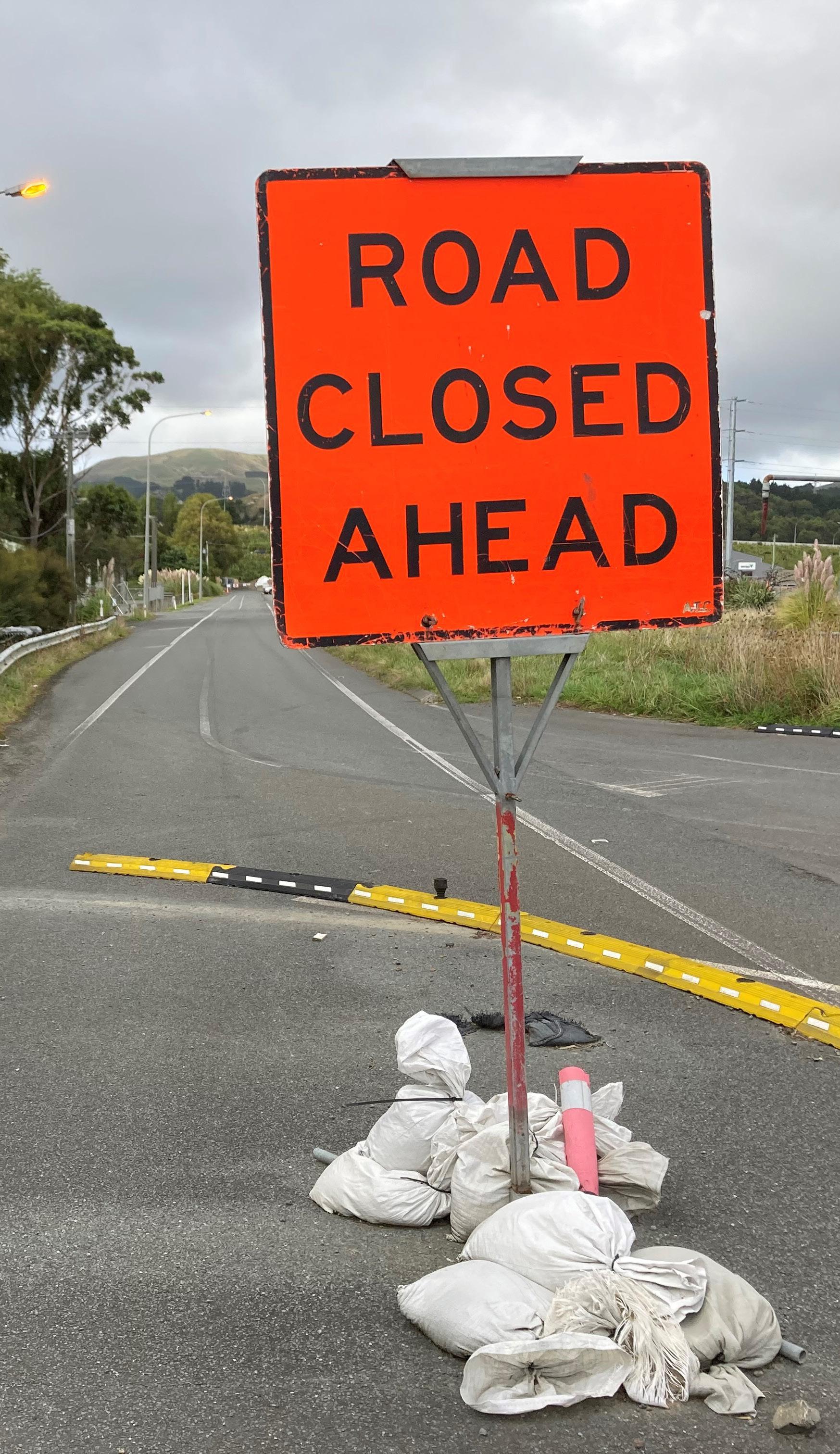
Vehicles travelled 47.4bn kilometres in 2021
45% of NZers would consider buying an EV
72% say cost is biggest obstacle to buying an EV
The average vehicle in NZ has CO2 emissions of around 171 grams/km
NZ has 889 vehicles per 1000 people
Top four professions: Motor mechanic, Diesel motor mechanic, Sales, Automotive electrician
6378 automotive apprentices in 2022
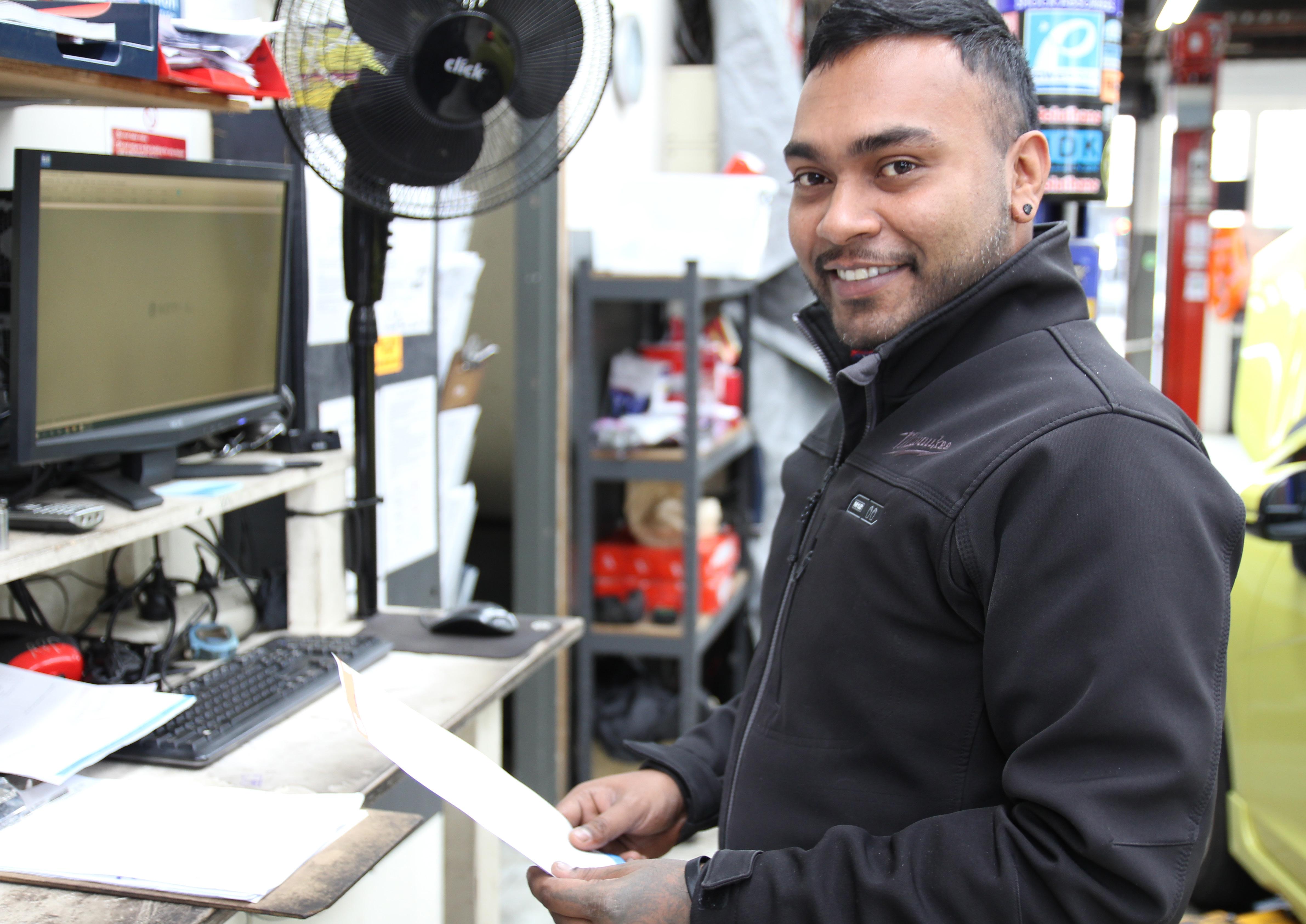
The automotive industry is a significant contributor to the New Zealand economy. It employs 62,700 people, provides $30 billion in goods and services to the people of New Zealand, and contributes $5.5 billion to Gross Domestic Product. However, it must be supported with frameworks that are robust and fair, to ensure a level playing field that is fair to all participants without fear of market domination by any one party.
The Commerce Commission’s Market Study into retail fuel found that the Fuel Industry Act 2020 was needed to improve competition and transparency in the sector. However, the Act did not address the challenges faced by smaller businesses, which are vital for a diverse and resilient fuel market.
The 2020 Act included key changes releasing fuel distributers (primarily medium-sized wholesale resellers) from anticompetitive supply contracts and improving their access to wholesale markets. But these provisions applied only to distributors, not all fuel resellers, effectively excluding SME independent fuel retailers. This did not address the market challenges faced by large numbers of smaller independent retail businesses, which are vital for a competitive, diverse and resilient fuel market, and for consumers.
The Commission’s later Grocery Market Study recognised the importance of small businesses in the grocery sector and introduced measures to support them in competing with larger players. The same approach should be applied to the fuel sector, to ensure that smaller fuel retailers have fair access to wholesale supply and pricing.
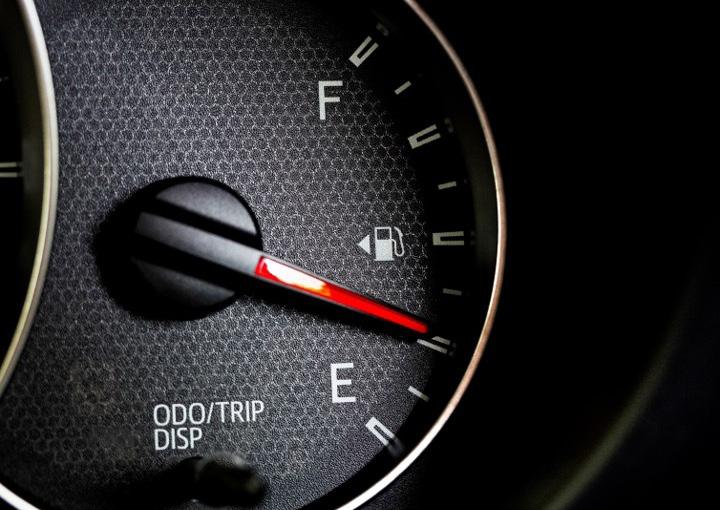
• Amend Sections 16 and 17 of the Fuel Industry Act, so smaller independent dealers are released from anticompetitive supply arrangements and able to supplement supply agreements from the wholesale market
• Ensure that a wholesale collective bargaining exemption applies to the retail fuel market, allowing smaller retail fuel operators to secure fairer contractual outcomes
Many automotive franchisees and franchisors have experienced unfair treatment in their franchising relationships. For example, some have had their franchise agreements terminated or renegotiated without reason, resulting in business closures or job losses.
Unlike Australia, New Zealand does not have any specific law to regulate franchising conduct and protect franchisees’ rights. This creates an imbalance of power and a lack of recourse for franchisees.
We have seen how Australian dealers were compensated when a major manufacturer exited the market, while New Zealand dealers would have received nothing had the manufacturer not voluntarily applied the same formula.
We need a mandatory franchising code similar to Australia, to ensure fair and ethical franchising practices here.
• Consider a separate Act to regulate the franchise sector, address power imbalances and ensure fairness for franchisees and franchisors

The Consumer Guarantees Act (CGA) is a blunt instrument when applied to vehicle sales. Under the CGA, a buyer can receive compensation for losses resulting from vehicle failure purchased from a licensed motor vehicle trader.
However, in some cases, a buyer can also recover the full purchase price of a vehicle even after a year or more has passed.
While the right to a full refund for faulty goods is keystone to consumer law and is recognised by the industry, there may be instances where a reduction for usage and depreciation is appropriate.
It has been several years since the CGA’s provisions for vehicles were last amended. A rethink is needed on how they might best apply.
• Consider amending the CGA, giving courts and tribunals discretion to allow for depreciation and use of the vehicle in some cases
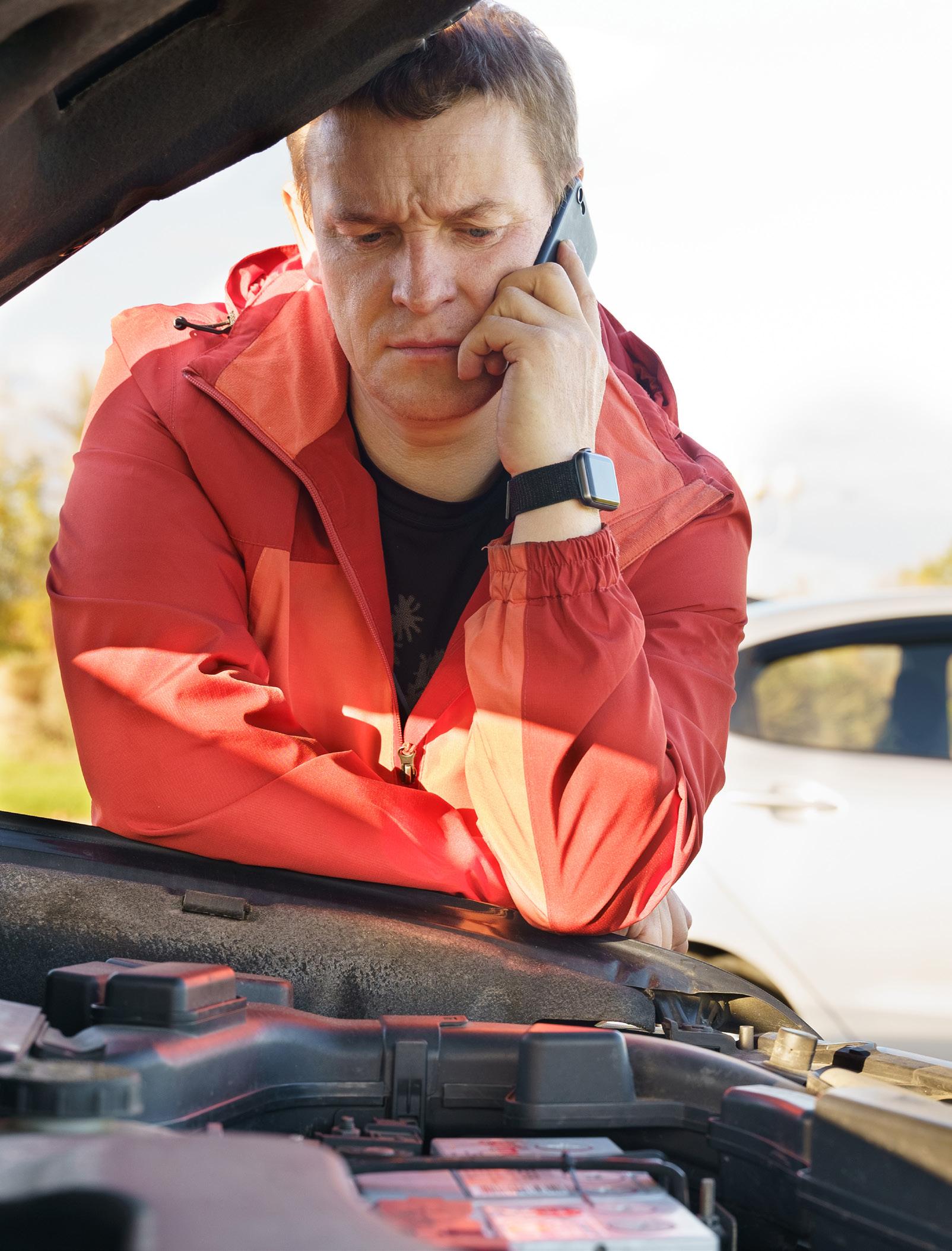
A repairer’s duty of care with dumped vehicles is a long-standing grey area in the law. While parts of current law deal with abandoned goods (such as local authorities dealing with cars left on public roads), there are no such processes for repairers left with a dumped vehicle.
In some cases, when the cost of repairs to a vehicle exceeds its value, owners simply refuse to pick it up and cut contact with the repairer.
This means repairers can be left with a vehicle that has been effectively dumped on them, but which they cannot scrap or sell for years, for fear the owner might later try to reclaim ownership – all the while dealing with the expense and inconvenience of storing a deteriorating vehicle.
This is a regular occurrence and inconvenience to business owners.
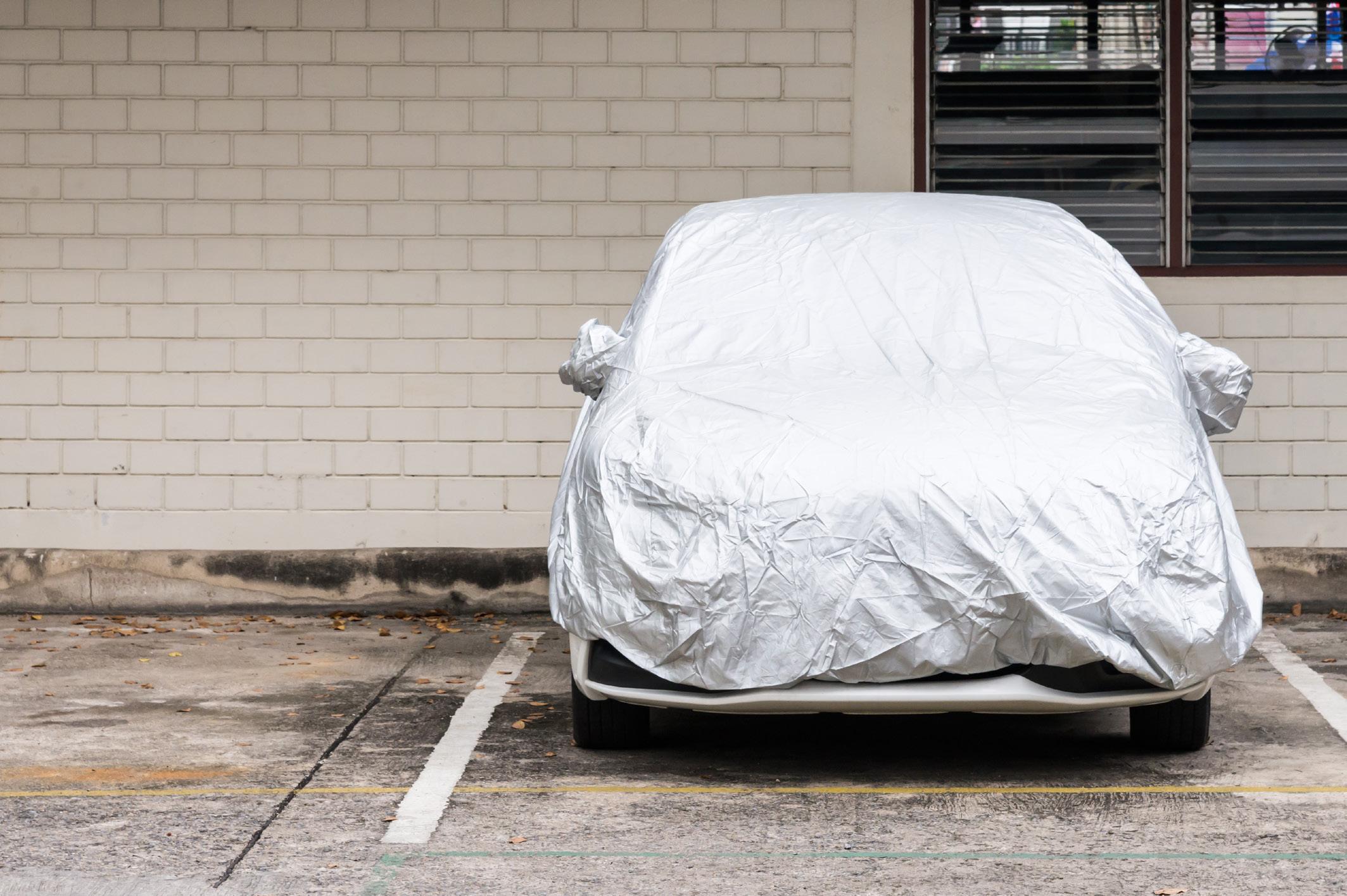
• Add provisions to existing legislation establishing a process for repairers lawfully to deal with abandoned goods, perhaps drawing on existing laws that apply to local authorities and residential landlords dealing with abandoned goods or aspects of the existing statutory worker’s lien sale process
The Motor Vehicle Disputes Tribunal (MVDT) is a useful forum for the costeffective resolution of disputes that can benefit both car buyers and motor vehicle traders.
But nearly 20 years have elapsed since the development of the MVDT, and the time is right to consider the refinement of the Tribunal’s jurisdiction.
A core benefit of the MVDT is its access to technical assessors that can assist adjudicators with arguments concerning technical issues. However, the MVDT’s remit does not currently cover disputes arising from repairs that have to go to the ordinary Disputes Tribunal and do not have access to mechanical assessors.
• Give the MVDT a wider remit to hear repair cases. It should serve as a one-stop-shop for motor trade issues and disputes, and deal with a broader range of motor vehicle-related disputes, currently handled by other areas like the District Court and the Disputes Tribunal
• Lower the cap on the MVDT’s jurisdiction, and give adjudicators the ability to adjourn proceedings, direct focused legal input and allow greater lawyer involvement in larger or more difficult cases
• Establish that the MVDT has a clearer right to transfer cases to the District Court where appropriate
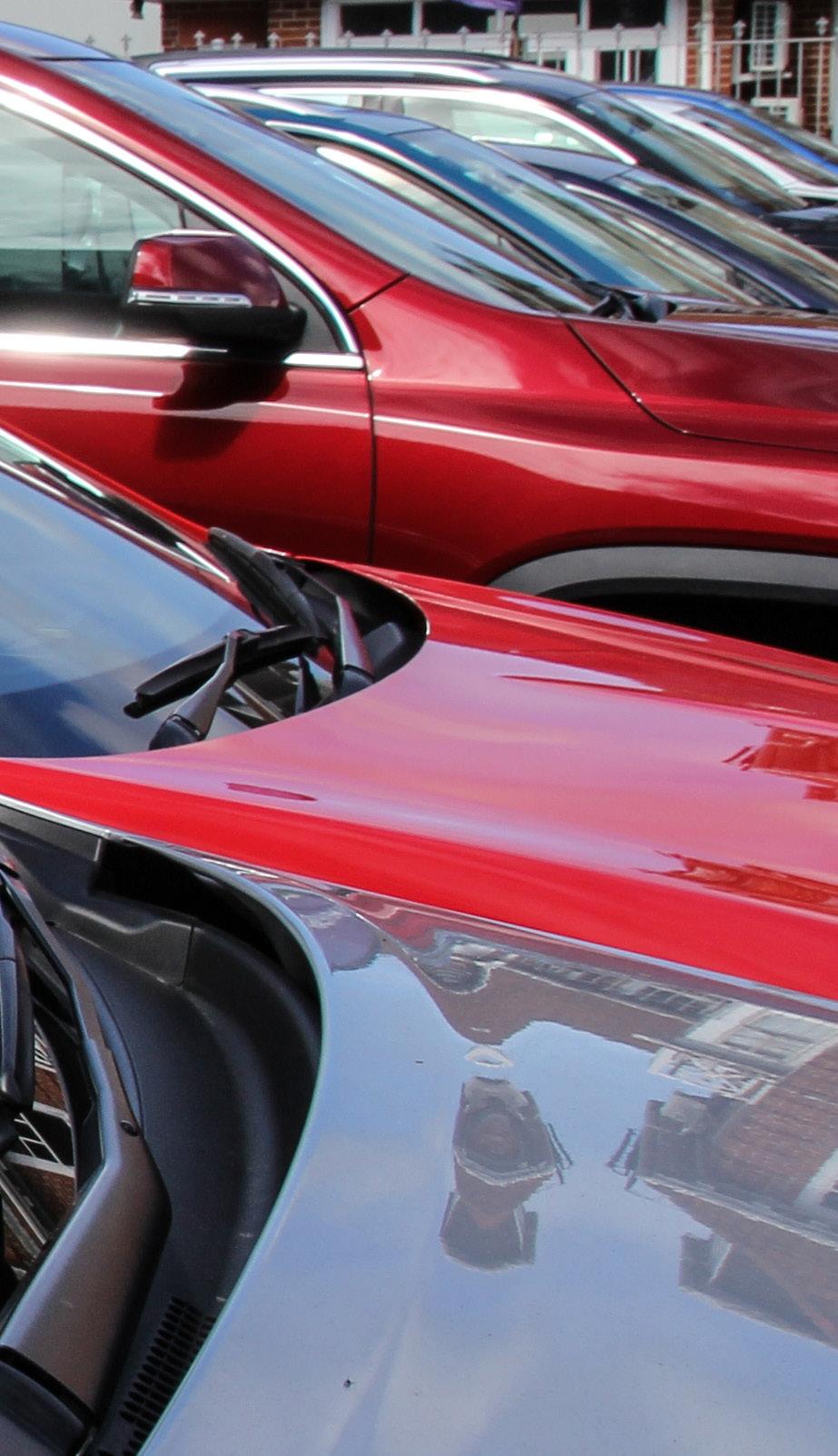
We all have a long way to travel on our journey.
Together, we can make it a safe and successful one.
MTA has been the automotive industry voice for more than 100 years.
We stand ready to work with the next Government to ensure the industry is strengthened and supported, for the benefit of every community, every family, every business.
Let’s hit the road.
A full list of our calls follows.
• Expand the immigration Green List to include collision repair and refinishing trades immediately
• Equip immigration officials with the resources and processes to effectively process applications. Ensure visas are processed efficiently to ensure workers are in New Zealand at the right time
• Work with MTA to establish MTA as a qualification and skills assessor, allowing MTA to offer a certification process that verifies if a migrant worker possesses the necessary experience and qualifications
• Remove the 1.5x wage threshold and focus on immigration settings that smooth the pathway for foreign workers to come here when roles can’t be filled domestically
• Level 4 qualifications need to be recognised as a skilled qualification
• Guarantee that apprenticeships will remain a key part of the vocational education system with employers at the centre
• Guarantee that the automotive sector voice, including MTA, is fairly included and represented at all levels of vocational education
• Ensure the outputs of vocational education are strongly connected, responsive and accountable to industry skill needs
• Ensure that all courses and training are fit for purpose and meet the needs of the modern industry
• Prioritise and invest in supporting secondary schools to showcase vocational education as a premium pathway, empowering students to pursue diverse career paths
• Direct agencies to set up specific EV apprenticeship pathways as soon as possible, enabling more workers to gain skills for an expanding EV market
• As part of supporting a “just transition”, establish a fees-free EV programme to foster the automotive industry’s future development and enhance the EV sector. Also provide fees-free EV micro-credentials to ensure all in the sector have access to EV safety and handling training
• Support automotive businesses taking on young people by making the Apprenticeship Boost scheme permanent
• Consider a tiered structure of payments under Apprenticeship Boost to ensure skilled trainers are recognised and rewarded for their contribution to developing apprentices
• Work with MTA to widen the range of funding and protective measures available to service stations to keep people safe
• Ensure that police investigate and put increased resources into catching offenders. Give courts the tools to punish offenders appropriately
• Allow capital expenditure for crime protective or preventative measures to be 100% tax deductible in year the cost is incurred
• Change the Warrant of Fitness so that when any vehicle becomes older than 15 years, it is required to undergo a six-monthly test
• Review that safety requirements under the Warrant of Fitness are fit for purpose
• Ensure all cars have a current Warrant of Fitness
• Enable the Ministry of Social Development to financially support low-income families to obtain a Warrant of Fitness
• Automatically fail any vehicle with its engine warning light on at Warrant of Fitness inspection
• As a first option, mandate emissions testing for all vehicles over 10 years old. This will ensure vehicles travel further on their fuel supply, effectively reducing emissions
• Increase awareness and education around emissions testing for vehicles. This will enable policy for emissions reduction to be informed, and all drivers to be better educated about the emissions profile and environmental impacts of their vehicle
• Phase out the Clean Car Discount
• Keep the Clean Car Standard, but defer the targets and goals by two years
• Consult with MTA and industry to produce more practical emissions settings and target
• Ensure that tax depreciation rules encourage businesses to take up EVs and other low-emission vehicles
• Consult with MTA and other industry groups to ensure there are complete recycling programmes in place for all vehicle components, such as tyres, batteries, cooling systems and bumpers, and there are end-of-life strategies to encourage a circular economy
• Create a scrappage scheme that aims to replace older polluting and unsafe vehicles with cleaner and safer modern alternatives
• Ensure that the Government Policy Statement on Land Transport directs Waka Kotahi to prioritise investment in road maintenance and repairs
• Restore the founding principle of the National Land Transport Fund to focus solely on roads
• Ensure that all New Zealanders have access to EV charging infrastructure
• Ensure that all vehicles on the road, including EVs, pay their fair share to the National Land Transport Fund
• Amend Sections 16 and 17 of the Fuel Industry Act, so smaller independent dealers are released from anticompetitive supply arrangements and are able to supplement supply agreements from the wholesale market
• Ensure that a wholesale collective bargaining exemption applies to the retail fuel market, allowing smaller retail fuel operators to secure fairer contractual outcomes
• Consider a separate Act to regulate the franchise sector, address power imbalances and ensure fairness for franchisees and franchisors
• Consider amending the CGA, giving courts and tribunals discretion to allow for depreciation and use of the vehicle in some cases
• Add provisions to existing legislation establishing a process for repairers lawfully to deal with abandoned goods, perhaps drawing on existing laws that apply to local authorities and residential landlords dealing with abandoned goods or aspects of the existing statutory worker’s lien sale process
• Give the MVDT a wider remit to hear repair cases. It should serve as a one-stop-shop for motor trade issues and disputes, and deal with a broader range of motor vehicle-related disputes, currently handled by other areas like the District Court and the Disputes Tribunal
• Lower the cap on the MVDT’s jurisdiction, and give adjudicators the ability to adjourn proceedings, direct focused legal input and allow greater lawyer involvement in larger or more difficult cases
• Establish that the MVDT has a clearer right to transfer cases to the District Court where appropriate


MTA Wellington Office
Level 5, AIA Tower
34 Manners Street
Te Aro
Wellington 6011
MTA Auckland Campus
485 Great South Road
Penrose
Auckland 1061
Postal Address PO Box 9244
Marion Square
Wellington 6141
Phone: 0800 00 11 44
Email: mta@mta.org.nz
Website: www.mta.org.nz
@motortradeassociation

@MTA_NZ